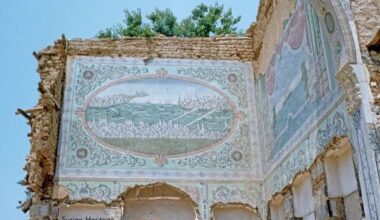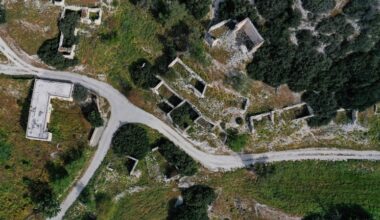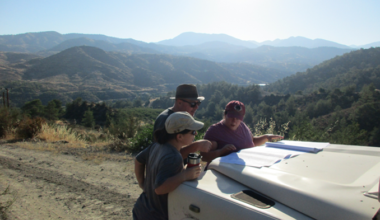By Simone A.M. Lemmers, Mass General Hospital and Harvard Medical School, Boston, USA
Palaeohistology – what the micro building blocks of our skeleton can reveal about ourselves
As a Biological Anthropologist, I use human hard tissue to investigate the past, with connections and implications for the present. I am particularly fascinated by the field of ‘Palaeo-histology’. Histology is the study of tissues, but palaeo-histology specifically focuses on the tissues that stayed preserved over long periods of time, mostly (but not limited to) the skeleton. Our bones and teeth have a beautiful way of growing, developing, and maintaining their structure. Within their microstructure, they lock a wealth of information on how people lived, what they ate, if they migrated, if and what kind of health issues they might have had, and how their bodies responded to this. Furthermore, the way we retrieve the material can give us clues on how people treated the remains, giving us insight into cultural norms and practices of the past, and can help us in forensic research. That is why for my research I have dived into the microscopic building blocks of our tissues to understand who we are, where we came from, and where we are going.
A particular topic I have been exploring is how the microstructure of teeth can record when an individual experiences a ‘stressful’ event. Humans have two sets of dentitions: our milk teeth are formed largely before we are born and in the first months following birth, while our adult dentition initiates just before birth and continues to form over many years. The reliable timing of tooth formation and eruption can therefore be used to estimate age up to early adulthood. During the time your teeth develop, every day a thin layer of dental tissue is formed, which is visible under a microscope (Figure 1) as beautiful incremental layers. The way teeth are formed and record stressful events can be compared to the formation of year rings in trees: just like trees are known to record certain events and environmental changes, teeth also have the ability to capture traces of ‘stressful’ events such as a period of malnutrition, illness, or psychosocial stress. Those lines are called ‘stress lines’ and can be visualised using light microscopy. As part of my PhD research, I tested the hypothesis that events related to life history, such as birth, weaning, and stages of maturation can leave traces in teeth. This is extremely useful as it allows us to reconstruct when in the human lineage the modern human ‘life history’ package arose. I also applied this method of dental histology to my postdoc at the Cyprus Institute to examine prehistoric remains from multiple places, including South West Asia and Cyprus.
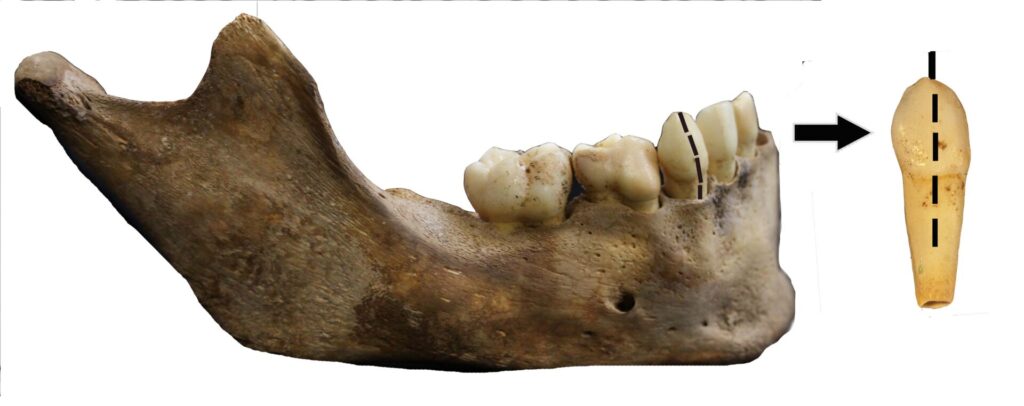
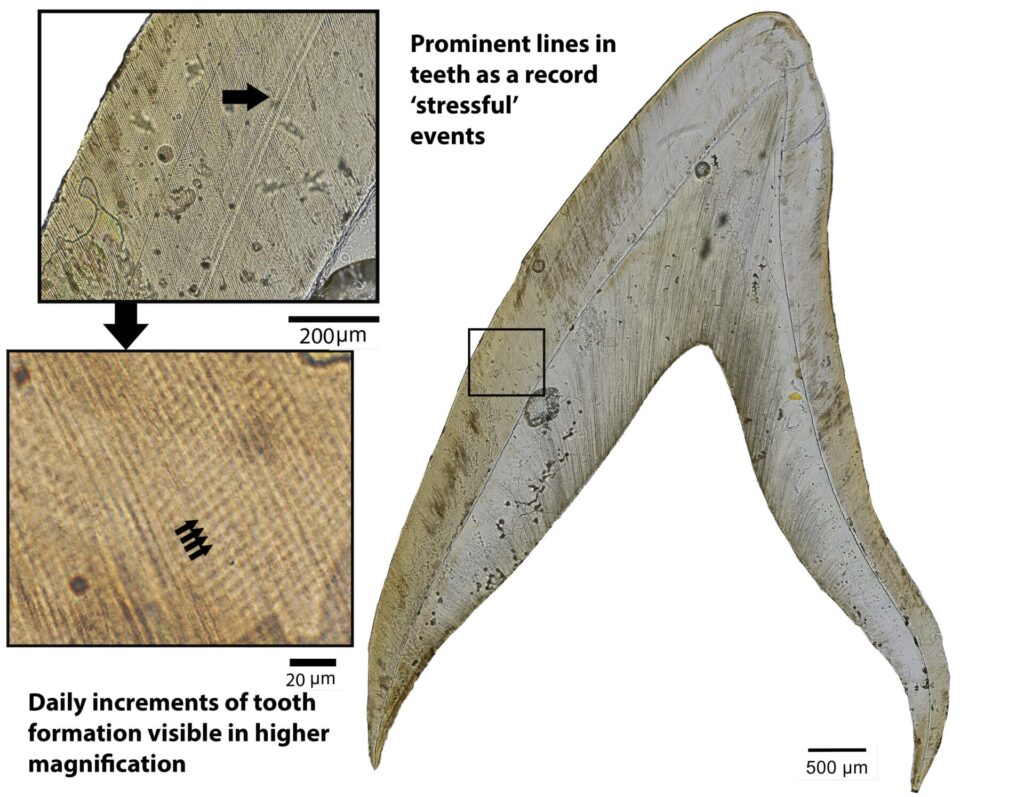
Figure 1: Top – Archaeological skeletal remains with a milk canine and sectioning plane for dental histology indicated (black arrow). Bottom – After sample preparation, the microstructure of an archaeological milk tooth can be examined using transmitted light microscopy. With ‘palaeo-histology’ we can calculate at what age in early life an individual experienced a stressful event. Photographs and micrographs by SL, published here.
When the past helps us to understand the present
With help of the CBRL, I moved to Cyprus to study ancient human remains of Cyprus and West Asia at the Cyprus Institute and stayed after the fellowship for my postdoctoral position. Aside from archaeology, I have always been interested in how we can use archaeological research not just to understand the past, but also to see what the results from these studies can teach us about the present.
Recently, I had the fantastic opportunity to apply what I learned through my work on ancient bone and dental microstructure to the present. Since August 2022, I have been working as a research fellow at the Dunn Lab at Mass General Hospital and Harvard Medical School in Boston, USA. At the Dunn lab, I joined a team working with naturally exfoliated milk teeth, which might be used as biomarkers to assess the impact of early-life adversity and stress on mental health and depression in later life. I am here to contribute to the teams’ work with my histological knowledge of tooth development and the experience I gained from working with archaeological remains. It is truly wonderful to see how the past can reach out to the present, and the creativity that comes from interdisciplinary research. Combining archaeological methods with information and knowledge from clinical settings is a novel approach that will push both fields forward. It improves our understanding of how and why ‘stress’ gets incorporated into our hard tissues, and how we can use this to answer a multitude of questions.
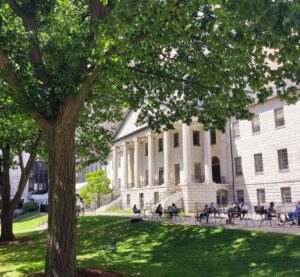 |  |
Figure 2: Mass General Hospital and Harvard Medical School, Boston, Massachusetts, USA.
A CBRL grant as a career stepping-stone
When I applied for the CBRL grant in 2018, I was at a crossroads in my scientific career. As a freshly graduated PhD, you would’ve spent years of your life breaking your brain over a highly specific topic, doing your utmost to contribute to science, and putting yourself to the test. Once you’ve submitted, defended, and passed your viva, you get a wave of happiness and excitement, but also a strange moment of stillness – that massive task that was in front of you for all this time, is done. What now? Most graduates will have ideas for the next step, building out or beyond the thesis, starting a new direction, and sending out job applications. It’s also a time to decide if you want to stay in academia, or if you want to do something completely different. Although the options are numerous, it can be a daunting period, and competition for postdoctoral grants can be harsh. When I came across the fellowship application for the CBRL it seemed the ideal stepping-stone: a 6-month period to pursue a new research idea in a new place, with new colleagues, and new mentors. And indeed, it was an absolute game-changer for me when I was awarded the fellowship. It allowed me to instantly take off after my PhD with the next step in my career with the financial support that I needed to bridge that post-PhD period. I can highly this grant for young researchers, hoping it will give them the same wings to fly as it did for me. Although I now moved away from Cyprus and crossed the pond to the USA, my experience of working and living in the Levant was incredible and it will remain with me forever, both in terms of career advancement as well as personal level, and I intend to return many more times in the future.
About the author
Dr Simone A.M. Lemmers is a biological anthropologist working at the Dunn Laboratory, MGH / Harvard Medical School, Boston as a research fellow. She completed her PhD at Durham University, UK, where she focused on stress, life history and dental development in primates, followed by a CBRL-funded fellowship at the Cyprus Institute in Nicosia, Cyprus, from August 2018 to January 2019. Within the Dunn Lab, she is working with deciduous teeth as biomarkers to assess the impact of early-life adversity and stress on mental health and depression in later life.
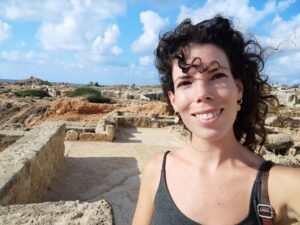 Simone at the archaeological site of Tombs of the Kings, Paphos. June 2022.
Simone at the archaeological site of Tombs of the Kings, Paphos. June 2022.
The views expressed by our authors on the CBRL blog are not necessarily endorsed by CBRL, but are commended as contributing to public debate.












